By Leroy (Chav) Chavez
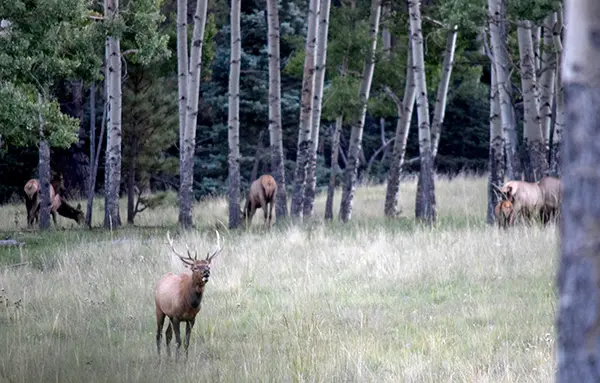
When you wander the mountains as often as I have hunting the elusive and majestic wapiti, I observed a lot of things that did not make any sense at the time. Seemingly random events at the time just seemed that—-random. But on further reflection and memory recall, a clearer picture emerges, an ah-ha moment.
Elk like an occasional treat
Even an elk likes an occasional treat, something other than the usual grasses and forbs that make up the usual diet. On average, an elk will eat about 3 pounds of food per day for every 100 pounds it weighs. A 500 lbs cow will eat at least 15 lbs of food everyday, while an 800 lbs bull will eat 24 lbs of food daily.
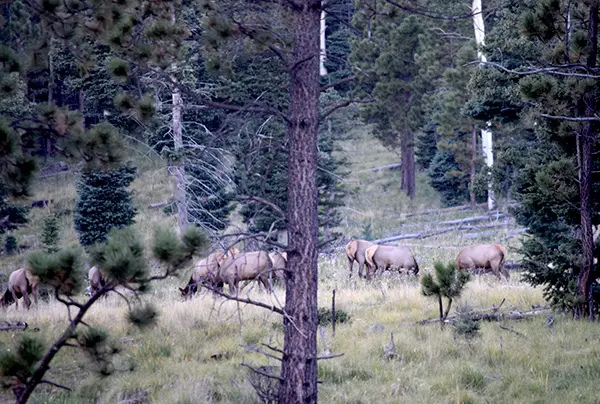
Elk consume green grasses and forbs (basically any other green plant, except grasses) throughout the year, but they venture from the norm and seek something different, a treat—–and that my friend, is where you may locate your prey. Obviously, not all the time, but elk will frequent these areas more often, than not.
Five unusual “treats” include acorns, pinon nuts, fresh mushrooms, Aspen bark and Wild Anise.
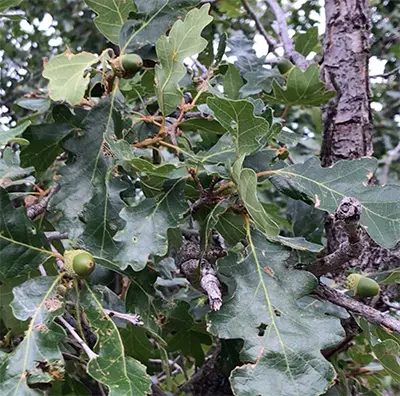
Of the five, acorns are the most common and appear throughout the Southern Rocky Mountains. Acorns are highly nutritious and are packed with healthy fats, vitamins and minerals. In large amounts, an elk can pack a lot of weight in a short amount of time— a must for the rut and survival.
During the opening weeks of the archery season, if the acorn crop is abundant, so will the number of elk in the area. Even when disturbed by hunting pressure, elk will return to the acorn fields and feast at night. When not disturbed, they will often bed within the acorn trees, leaving only to drink. We have harvested dozens of elk when acorns are abundant. So, when doing your preseason scouting checking the acorn crop is a must.
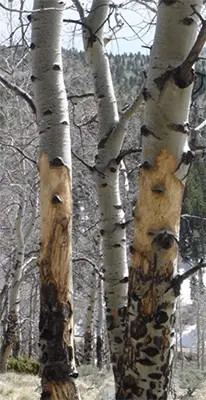
Aspen bark is a sweet and starchy carbohydrate source that contains a chemical similar to aspirin (salicin which helps reduce inflammation). Elk will eat young Aspen shoots and strip bark during any time of the year, but in the winter months, Aspen bark is a critical food source. During the Summer or Fall, a chopped or felled tree is often quickly stripped of its bark and leaves are also devoured by elk. Aspen stands that are frequented by elk show “teeth marks” where elk strip the bark. In time, the strip marks turn black and mark the Aspen trees from ground level to anywhere from 4 to 6 feet high.
While scouting and hunting for sheds in March, we located a large group of bull elk that were feeding on Aspen bark in a burn area. The Aspen’s canopy had been thoroughly burned, but partially burned bark remained and the bulls were feeding on that.
Another favorite treat for the Wapiti is the pinon nut. These tasty nuts provide nourishment for all sorts of animals and birds, but a good crop occurs every few years. So for the elk, they are definitely a treat because they are not an annual crop. A pinon nut is protein rich and has a high concentration of monounsaturated fats and oils, good for the cardiovascular system.

Several years ago, while glassing a hillside, I noticed a tree shaking vigorously while every other tree was still. Upon further observation, I could see an elk body next to the shaking tree,
which was a pinon tree. When the tree stopped shaking, I saw the head lower, it was a huge bull elk and it was feeding on something on the ground. After a few minutes, he raised his head, placed his antlers in the tree and started to vigorously shake the branches. He then lowered his head and started feeding again. He repeated the action several times, before moving to the next tree. It finally dawned on me that he was pinon-picking elk style. He shook the cones and nuts free, then feasted. Though this probably occurs everywhere on the mesa tops and side canyons whenever there is a good pinon crop, elk will be hard to see on level land unless you literally walk up to them or you notice a “shaking” tree first. However, they are easy to spot on hillsides.
Several seasons ago while following a distant bugle, I wandered into an area that smelled like licorice. The odor was strong and pleasing to the senses and I sought out the source. A plant with a small yellow flower was everywhere. I picked up a few plants and crushed them in my hand, and sure enough, the smell of licorice was strong. The source of the licorice smell is Wild Anise and it was present all around me as well as countless fresh elk droppings. In that same area I encountered a huge 16 point mule deer and a small herd of elk and was able to harvest a mature cow. A year later, in the same Wild Anise filled area, I missed a large 5 X 5. Anise is an edible plant that tastes like licorice and is rich in nutrients, it also helps reduce inflammation. And apparently, it attracts elk and deer.

The final elk delicacy will be found where rain is abundant or when our Southern Rocky Mountains have a good rainy season. Edible mushrooms may not seem like a source of food for elk, but locate fields of mushrooms, and you will see signs of elk everywhere. Mushrooms are high in nutrients, antioxidants and vitamins. I doubt if elk seek the fungus for medicinal purposes, but they readily feed on them and must like the taste.
Four seasons ago, after a rainy Summer, I entered an isolated area that had remnants of mushrooms everywhere. I figured a bear may be nearby and had munched the white colored mushrooms down to the stem. I nervously decided to cautiously get out of the area, when I spotted a bull elk moving steadily ahead of me chomping on every mushroom in sight. I was unable to get a clean shot and the bull wandered away after scenting me.
So my friends, when doing some early season scouting,take note of areas that may contain (1) an acorn crop, (2) quaking Aspen, (3) a pinon crop, (4) an Wild Anise field and (5) wild mushrooms. An elk’s diet varies, though grasses and forbs are the main source of food, but on occasion, elk will seek a treat to munch on, something that may not occur annually.
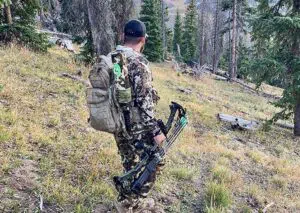
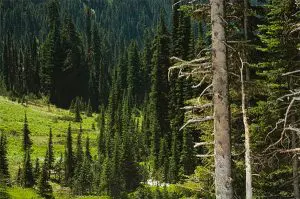
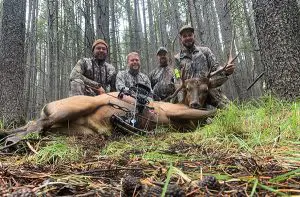
Nice article, Chav!
very good info…thanks Chav
Thank you for the info Chav! Some adding things to look for this spring & summer
Just don’t look for the mushroom in the photo since that one is highly poisonous, even to the elk.
I have seen the elk eat all the tops off the anise plants… I didn’t realize it was a treat for them. Thanks for the info.
I came across this while hunting elk in the Mt. Adam’s WA wilderness. No one had seen any elk at all during the hunt (not even a shot to be heard), but then we stumbled across a bull elk that was feeding on a patch of wild mushrooms. Missed the shot, but the next day we saw the bull again with another bull in the same mushroom area. Still no shot opportunity, but even when Hunter’s say there are no elk, they are still there.